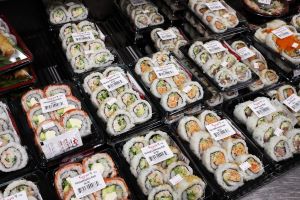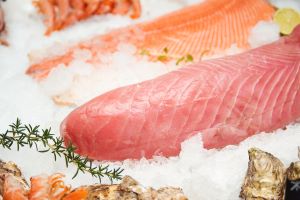Consumer Advisory
A consumer advisory is important information that restaurants must share when they serve raw or undercooked animal foods. It has two main parts: a disclosure and a reminder.
Disclosure: This is a clear statement that tells customers about the raw or undercooked foods on the menu. For example, the words “raw” or “undercooked” can be used, or an asterisk can be added next to the food name with a note explaining it.
Reminder: This warns customers that eating raw or undercooked foods can make them sick. It also uses an asterisk and a footnote to connect the warning to specific menu items.
Consumer advisories are often found on restaurant menus for items like raw sushi, steaks cooked to order, or drinks made with raw eggs. For example, sushi that contains raw fish must have both a disclosure and reminder, even if it’s prepackaged. Similarly, raw shellfish like clams and oysters also require these warnings. In summary, consumer advisories help keep customers informed about the risks of eating raw or undercooked foods, allowing them to make safer choices. For additional information refer to the Consumer Advisory (PDF), (Somali PDF), (Spanish PDF) fact sheet.
 Packaged Sushi
Packaged Sushi
Sushi is commonly made with raw fish ingredients. Although a consumer may not specifically order the product raw, a disclosure and reminder on the package are still required. The disclosure and reminder are also required on the menu board or pamphlet if consumers are allowed to order for immediate service. This helps inform the consumer which sushi rolls have raw or cooked ingredients, so they can make an informed decision. Refer to the Fish Intended for Raw Consumption (PDF) (Somali PDF), (Spanish PDF) fact sheet for other requirements on serving raw or undercooked fish.
Shellstock in a Retail Service Case 
Clams, oysters, mussels, and other shellstock are considered raw, ready-to-eat foods per the Minnesota Food Code. These foods are likely to be eaten raw or undercooked and therefore require a consumer advisory. Other raw meats in the service case do NOT require a consumer advisory as it is likely the consumer will cook them prior to consumption.
 'Sushi Grade' Fish
'Sushi Grade' Fish
Fish used for sushi, or “Sushi grade” fish, sold or advertised in a seafood case is becoming more common. When fish is sold or marketed as “sushi grade”, the food establishment is indicating the food is safe to be consumed as a raw, ready-to-eat food and must provide a consumer advisory. When certain species of fish are sold as “sushi grade”, such as salmon, a retailer must also have proper documentation showing the fish was properly frozen to destroy parasites. Refer to the Fish Intended for Raw Consumption (PDF) (Somali PDF), (Spanish PDF) fact sheet for other requirements on serving raw or undercooked fish.
Raw Eggs in Cocktails
Various drinks such as Tom and Jerry, eggnog, or pisco sour are commonly prepared with raw eggs. When these items are prepared with raw eggs, a consumer advisory is required on the menu to ensure consumers are aware of the increased risk of consuming the beverage. Alternatively, if these items are prepared with pasteurized eggs, no consumer advisory is required.

